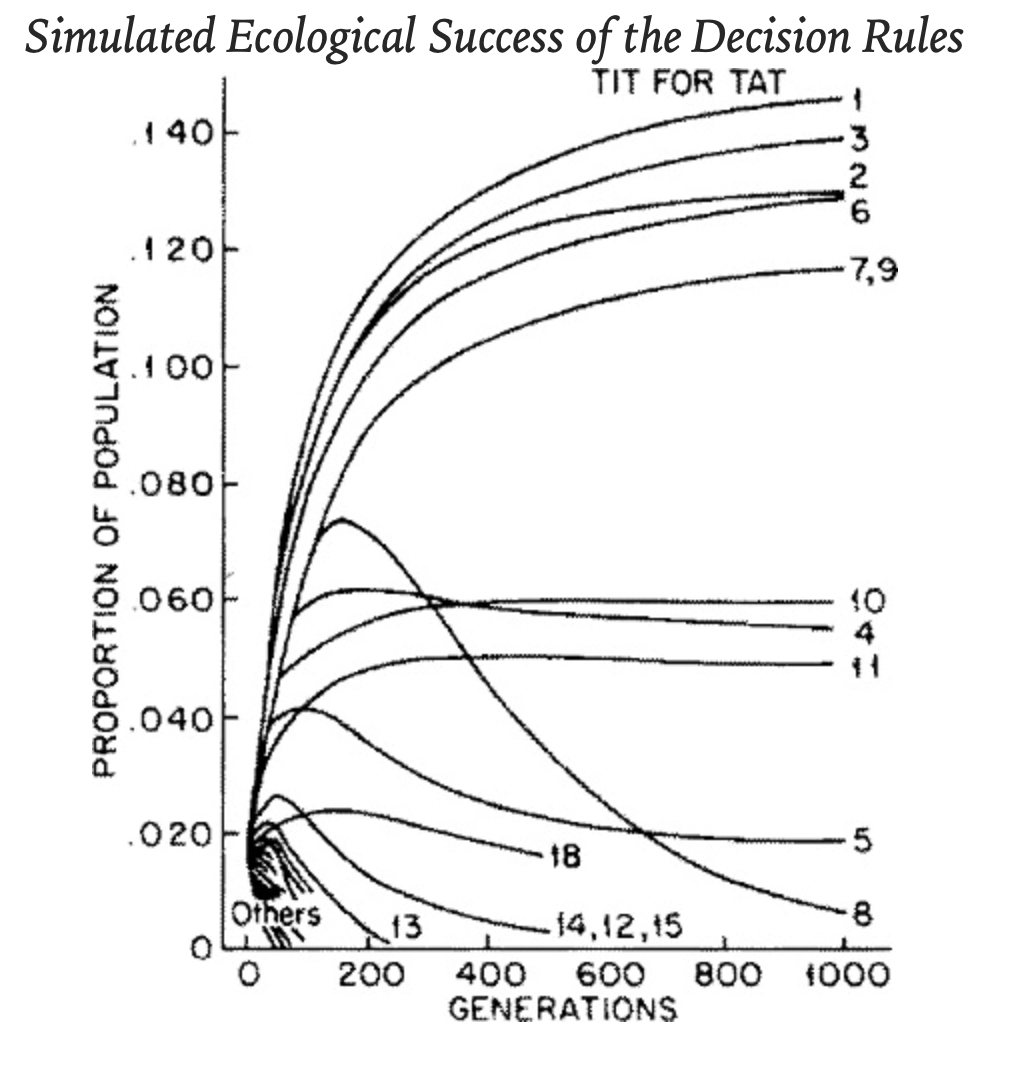The evolution of cooperation - 4
“At first, poor programs and good programs are represented in equal proportions. But as time passes, the poorer ones begin to drop out and the good ones thrive. Success breeds more success, provided that the success derives from interactions with other successful rules. If, on the other hand, a decision rule’s success derives from its ability to exploit other rules, then as these exploited rules die out, the exploiter’s base of support becomes eroded and the exploiter suffers a similar fate.”
“The ecological analysis shows that doing well with rules that do not score well themselves is eventually a self-defeating process. Not being nice may look promising at first, but in the long run it can destroy the very environment it needs for its own success.”

当一个策略是靠着剥削其他不好的策略而获益时,短期在环境中那些不好的策略还存在时,会有较好的收益,长期当那些不好的策略别筛选了,那靠剥削的策略也会衰亡。
“Proposition 1 says that there is no absolutely best rule independent of the environment. What can be said for the empirical successes of TIT FOR TAT is that it is a very robust rule: it does very well over a wide range of environments. Part of its success might be that other rules anticipate its presence and are designed to do well with it. Doing well with TIT FOR TAT requires cooperating with it, and this in turn helps TIT FOR TAT. Even rules like TESTER that were designed to see what they could get away with, quickly apologize to TIT FOR TAT. Any rule which tries to take advantage of TIT FOR TAT will simply hurt itself. TIT FOR TAT benefits from its own nonexploitability because three conditions are satisfied:
- The possibility of encountering TIT FOR TAT is salient.
- Once encountered, TIT FOR TAT is easy to recognize.
- Once recognized, TIT FOR TAT’s nonexploitability is easy to appreciate.”
这里聊了TIT FOR TAT之所以表现很好的原因,这种策略存在的可能性非常大,另外策略很容易辨认出TIT FOR TAT,当发现对方用TIT FOR TAT那么知道无法剥削对方,那为了使自己的利益最大化,那就只能选择合作。